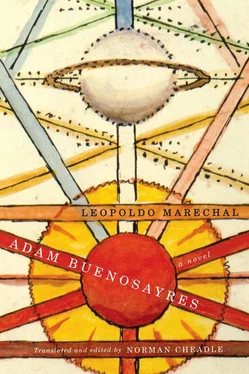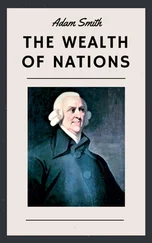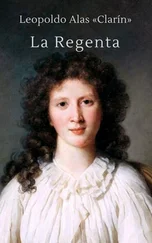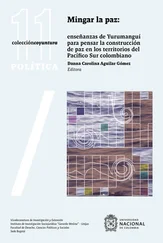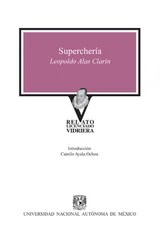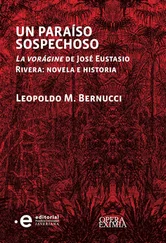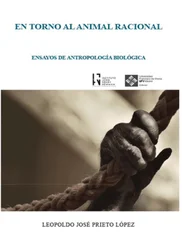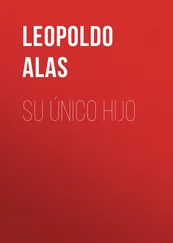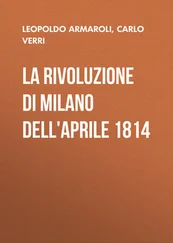10 This curious sentence, framing the paragraph, has been translated literally. Marechal writes brazo , not rama [branch], of the fig tree. Though brazo de un árbol is more acceptable in Spanish than the English “arm of a tree,” the choice of words is odd. Given that the paragraph is a gloss on the crucifixion story (referencing passages from Matthew 27, Mark 15, Luke 23, and John 18), the word brazo “arm,” evokes brazo de cruz , “cross-arm,” and by association the arm of the Cross. Citing Matthew 27:3 (error for Matthew 27:5) where Judas hangs himself, Barcia (551n) erroneously attributes the detail of the fig tree to this same biblical passage, which states simply that Judas “went away and hanged himself.” According to Kim Paffenroth (123), “among the many species [of tree] on which Judas hanged himself are the fig, sycamore, elder, willow, grape vine (!), tamarind, oak, dog rose, poplar, and redbud” ( Judas 123). In English we have the Judas tree (a flowering deciduous), but in Spanish language and culture the (non-biblical) image of Judas hanging from the fig tree is deeply etched. On the other hand, the Son of Perdition is from John 17:12, where Jesus in prayer tells God that of his faithful followers “none of them is lost, but the son of perdition; that the scripture might be fulfilled”; the “scripture’s fulfillment” refers to the Old Testament prophecy: “Let no man deceive you by any means: for that day shall not come, except there come a falling away first, and that man of sin be revealed, the son of perdition” (2 Thessalonians 2:3). All this suggests an allegory of Samuel Tesler’s imminent conversion to Christianity: Samuel’s agony (Judas hanged in the fig tree) is a prelude to rebirth in Christ, who in Marechal’s narrative gloss is being simultaneously crucified. In fact, Jacobo Fijman (real-life model for Samuel Tesler) did convert to Christianity in 1930 (Bajarlía 83).
11 In “Dos días” (1927), his own account of his first internment in the mental asylum, Jacobo Fijman recalls saying: “¿no sabe que soy el Mesías?” [Don’t you realize I’m the Messiah?] ( San Julián 19); and he insists: “Soy el Mesías” (22), along with the variant “soy el Anunciado” (20, 21). In a 1969 interview, he recalls with sly humour: “Years ago I met up with the midwife who brought me into the world; she said I was born talking. And you know what I was saying? I am the Messiah. What’s more, I said it in Hebrew. Take note, it’s not the kind of childhood memory you’ll hear from Borges” (qtd. in Barjarlía 41). Fijman evidently enjoyed the notoriety of the anecdote and must have told variations on it repeatedly over the course of his life.
12 A century earlier, the area occuped by Villa Crespo would have been the outskirts of the city. The wealthy Balcarce family had their magnificent summer house on what became the 600 block of Warnes Street. In the same era, nearby Canning was known as the avenida del Ministro Inglés , apparently because the British diplomat had his residence there (Pino 94–5).
13 “Super flumina Babylonis ibi sedimus et flevimus cum recordaremur Sion” ( Vulgate Psalm 136:1). “By the rivers of Babylon we sat and wept when we remembered Zion” ( New International Psalm 137:1). Zion, the Promised Land, is for Christians a figure of the Kingdom of God promised by Christ.
14 Narrating the agony of Santa Rosa de Lima, Marechal writes of her agony: “Rosa, on the cross, must have imitated the Crucified, saying as did he in his agony: ‘I’m thirsty. Thirst is devouring me!’ ” ( Vida de Santa Rosa de Lima, OC II, 419). The biblical allusion is to John 19:28; again, the implication is that Samuel is undergoing his via crucis prior to an eventual conversion to Catholicism. Abelardo Castillo’s character Jacobo Fiksler — based on Jacobo Fijman/Samuel Tesler — protagonizes a novel whose title seems to refer to this passage: El que tiene sed (1985) [He Who Is Thirsty].
15 Noumena (plural of noumenon ) in Plato refers to the objects of intelligence or substantive Ideas. Marechal is likely using the term in the Platonic rather than the Kantian sense.
BOOK FIVE, CHAPTER 1
1 See 633n22.
2 The Pampas lived in the plains of what is now the Province of Buenos Aires. Hunters and gatherers, they were famous for hunting ostriches using bolas (two or more stones tied to a strong cord, to be thrown at the prey so as to wind round it and entangle it).
3 Chubut is a province in southern Argentina. This episode is a homage to Ricardo Güiraldes’s famous novel, Don Segundo Sombra (1926), a text of literary modernism that closes the cycle of the gauchesque genre.
4 “En el corimbo rojo de la mañana zumban / tus abejorros, Maravilla.” In the red corymb of morning your / bumblebees buzz, Wonder.” First lines of Marechal’s poem “Canto en la grupa de una mañana” [Song on the Haunches of a Morning] in Días como flechas (1926).
5 In particular, Jorge Luis Borges, who brought ultraísmo from his contacts with the Spanish literary avant-garde, and Xul Solar, who had spent several years in Europe.
6 As Barcia (567n) observes, Santos Vega stands in here for that other iconic gaucho, Martín Fierro, whose name was taken by the celebrated literary magazine (1924–27).
7 The Royal Keller, located at the heart of Buenos Aires (at Esmeralda 385), was a storied confitería and literary/artistic gathering place, including for the martinfierristas .
8 Speaking of his own life, Marechal uses the phrase “a first call to order” (Andrés 30) to characterize his evolution from the his avant-garde poetry of the mid-twenties to the “metaphysical” verses of Odas para el Hombre y la Mujer (1929). Adam’s trip to Europe is a narrative condensation of Marechal’s two trips there, in 1926 and 1929–30.
9 Navascués ( AB 425n) surmises that Adam is referring to the mountain of San Miguel de Aralar, popularly known as the “Angel of Aralar,” near Olazagutía, Navarra.
10 Garcilaso de la Vega (1501–1536), Spanish poet who introduced Renaissance verse forms into Spanish literature. Salicio and Nemeroso are two “shepherds” who dialogue in Garcilaso’s first Égloga .
11 Don Quixote’s lengthy, eloquent paean to the mythical Golden Age (Book 1, chapter 11) is delivered in the presence of real shepherds, not characters out of pastoral novel as the Knight believes. The rustic shepherds, of course, have no idea what he’s talking about.
12 Athanase Apartis (1899–1972): sculptor born in Greece who studied under the more famous French sculptor Antoine Bourdelle (1861–1929).
13 Valery Larbaud translated Joyce’s Ulysses into French (the version that Marechal read in Paris in 1929–30); his article “James Joyce” ( Nouvelle Revue Française 1922) is ground zero of Joycean criticism. Friend of Ricardo Güiraldes and Manuel Gálvez, among other Argentine writers, Larbaud wrote articles in the 1920s for the major daily La Nación as well as for the literary magazines Proa and Martín Fierro (see Cheadle, “Between Wandering Rocks: Joyce’s Ulysses in the Argentine Culture Wars”).
14 Jujuy is the northernmost province of Argentina, bordering on northern Chile and southern Bolivia.
15 Alquiles Badi (1894–1976), Alberto Morera (1904–1954), Raquel Forner (1902–1988), Horacio Butler (1897–1983). Argentine painters who, among others — notably Antonio Berni (1905–1981) — formed the so-called Group of Paris. Perhaps the most internationally famous now are Berni and Forner. Marechal frequented the group both in the French capital and in Sanary-sur-Mer.
Читать дальше
